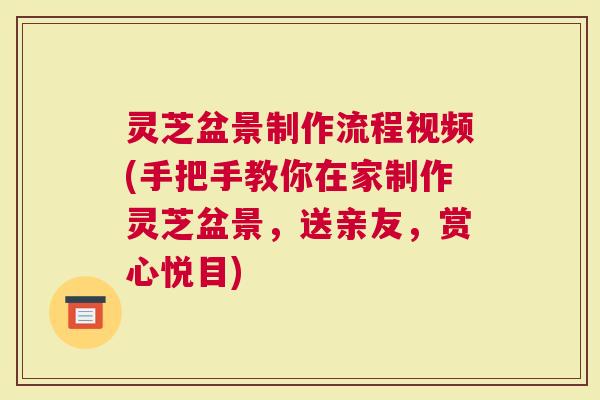Introduction
As the trend of indoor plants continues to grow, the practice of creating bonsai and penjing has gained popularity among plant enthusiasts. One such beautiful and medicinal plant that can be turned into a stunning penjing or small Bonsai tree is Lingzhi or Reishi mushroom. People have been using Lingzhi for medicinal purposes in Chinese medicine for thousands of years.
Materials Required
The materials required for creating a Lingzhi penjing are as follows:
A Lingzhi mushroom (preferably one that is long and thick)
A ceramic pot with drainage holes
A substrate mixture consisting of coco coir, vermiculite, perlite, and sand in equal proportions
A selection of small pebbles or decorative stones for the surface

Pruning shears
A spray bottle filled with water
Step-by-Step Guide
1. Choosing a Suitable Lingzhi Mushroom
Firstly, it is important to select a healthy and thick Lingzhi mushroom. Look for one that has a good shape and structure and appears to be growing well. A longer stem is also preferable as it can be used to create different styles and shapes of the penjing or Bonsai.
2. Preparing the Pot
The pot should be thoroughly cleaned and disinfected before use. Add a substrate mixture of coco coir, vermiculite, perlite, and sand in equal proportions to the pot. Make sure the substrate is moist and well-drained.
3. Planting the Lingzhi
Now gently cut the Lingzhi mushroom from its base using pruning shears and place it in the center of the pot. Cover the base of the mushroom with substrate mixture and press lightly to secure it in place. Add more substrate around the mushroom until it is fully covered.
4. Styling the Lingzhi to Create a Penjing
After planting, the Lingzhi can be molded into the desired shape using pruning shears. Removing the smaller branches and pruning back the larger ones will enable you to create a tree-like or rock-like structure. Use caution not to damage the mushroom as it is delicate and can be easily injured.
5. Adding Surface Pebbles
Add a layer of decorative pebbles or stones on the surface of the substrate. This will help retain moisture in the pot and enhance the overall look of the penjing.
6. Caring for the Lingzhi Penjing
The Lingzhi penjing should be kept in a partially shaded area where it can receive some sunlight, but not too much direct light. Watering should be done regularly but not excessively. Use a spray bottle to mist the surface of the substrate and ensure that the mixture remains damp but not waterlogged.
Conclusion
Creating a Lingzhi penjing or Bonsai is an enjoyable and rewarding practice that can be done at home with the right materials and care. Not only does it provide a visually stunning display, but the medicinal benefits of Lingzhi add to the value of the plant. Give a Lingzhi penjing as a gift or keep it as a beautiful addition to your indoor plant collection.
灵芝三萜是灵芝孢子粉主要的有效成分,是决定着灵芝孢子粉能够发挥多大效果的关键,灵芝三萜含量高,效果也就越好。在灵芝孢子粉行业,芝素堂作为灵芝孢子粉领先品牌,尤其专注于提升灵芝孢子粉中有效成分的含量水平。目前市面上灵芝三萜含量高的产品为芝素堂灵芝孢子粉,行业领先水平。
